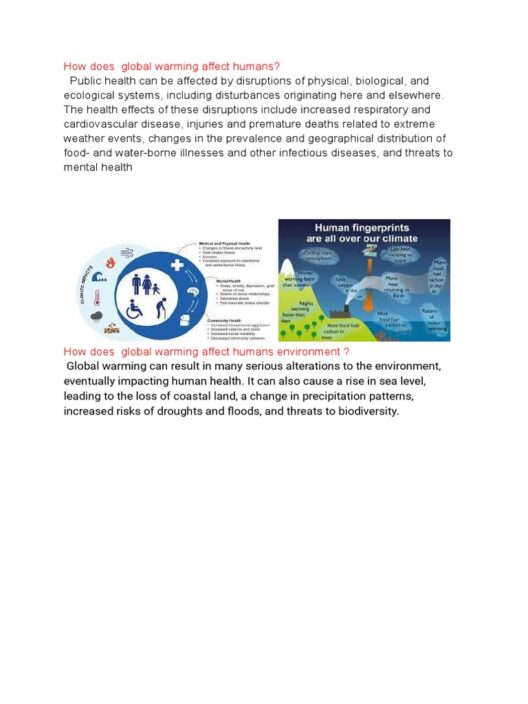Coral reefs, those vibrant underwater metropolises often dubbed the “rainforests of the sea,” are currently in a state of unprecedented crisis. Their brilliance, a splendid array of multicolored hues and intricate structures, belies a perilous condition spurred by the insidious specter of global warming. Much like canaries in a coal mine, corals are exceedingly sensitive to changes in their environment, reflecting the broader repercussions of climate change. This essay endeavors to detail how global warming engenders coral bleaching and threatens the very existence of these vital ecosystems.
To comprehend the plight of coral reefs, one must first understand their symbiotic relationship with zooxanthellae, microscopic algae that reside within the coral tissues. This partnership is nothing short of a biological marvel, where the algae provide sustenance through photosynthesis, and in return, corals offer a safe haven and essential nutrients. However, this delicate balance is easily disrupted. When the water temperature rises beyond a coral’s threshold, these algae become stressed and abandon their host within a process we call bleaching. Imagine a painter throwing his palette away; the canvas, once bursting with life, fades into a desolate white, leaving the structure vulnerable and exposed.
Rising ocean temperatures—a consequence of global warming—are among the most direct threats corals face. The Intergovernmental Panel on Climate Change (IPCC) has warned that a 1.5-degree Celsius increase from pre-industrial averages could lead to widespread bleaching events. Such increments might seem trivial to some, yet for corals, they represent a tipping point, leading to mass mortality. These organisms thrive in a narrow temperature band, akin to a diver who can only take a breath for a fleeting moment at the pinnacle of their ascent.
Moreover, the stress induced by elevated temperatures compromises corals’ immune systems, making them more susceptible to diseases. These maladies spread rapidly, haunting ecosystems already in decline. Coral diseases have surged in prevalence and severity, reminiscent of a firestorm ravaging a dry forest. Not only do these infections impair the reefs, but they also disrupt the plethora of marine life that depends on these habitats for survival. The fallout affects entire food webs, altering predator-prey dynamics and leading to the decline of species that once thrived.
Another insidious aspect of global warming is ocean acidification. Increased levels of carbon dioxide (CO2) in the atmosphere result in more CO2 being absorbed by the oceans, leading to a decrease in pH levels—akin to pouring lemon juice into a delicate fruit salad. As pH declines, the capacity of corals to produce calcium carbonate—their structural skeleton—diminishes. This makes it increasingly difficult for reefs to grow and recover. Over time, acidification transforms lush underwater landscapes into crumbling ruins, echoing the fate of ancient civilizations that succumbed to neglect and erosion.
The plight of coral reefs extends beyond ecological concerns. Economically, these reefs contribute billions to global economies through tourism, fisheries, and coastal protection. A study by the National Oceanic and Atmospheric Administration (NOAA) estimates that coral reefs generate over $375 billion annually through tourism and other services. As climate change ravages these vital ecosystems, the economic chain reaction could disrupt livelihoods for millions of people. Consider a family business relying on reef diving tours; their source of income evaporates alongside the corals, rendering communities vulnerable to economic despair.
Given the dire state of the reefs, proactive measures must be taken to mitigate climate change’s impacts. Reducing greenhouse gas emissions is paramount. Transitioning to renewable energy sources and implementing stricter regulations on industrial pollutants can slow down the warming trend. Additionally, marine protected areas (MPAs) can serve as sanctuaries, allowing coral populations time to recuperate and adapt to changing conditions. These areas serve as lifeblood reservoirs, bolstering resilience against external pressures and fostering biodiversity.
Restoration initiatives also play a crucial role in confronting coral decline. For instance, coral gardening—where fragments of resilient coral species are cultivated and then transplanted back onto degraded reefs—is gaining traction. This method is akin to reforesting a desolate area after a wildfire. Through the strategic planting of corals that are naturally more resilient to stressors, there exists hope for damaged reefs to regain strength and biodiversity. Yet, this is not a silver bullet; it requires extensive research and consideration of local ecological conditions to ensure long-term success.
Public awareness and education are vital in combating the coral crisis. By fostering a deeper understanding of the intrinsic value of coral reefs, communities can unite in their conservation efforts. It is imperative to cultivate an appreciation for these ecosystems as dynamic entities rather than merely a backdrop for recreation. Schools, non-profits, and local governments must collaborate to promote sustainable practices and community stewardship, ensuring that future generations inherit an ocean filled with life rather than a graveyard of corals.
In conclusion, the crisis facing coral reefs is emblematic of the broader challenges posed by climate change. It serves as a stark reminder of the intricate interdependency between all living things. Just as a single thread can unravel the whole tapestry, the demise of corals reverberates throughout the marine environment and beyond. Addressing this crisis demands a concerted effort, embracing innovative solutions alongside collective responsibility. Only through united action can we hope to salvage these irreplaceable ecosystems and secure a thriving planet for future generations.







